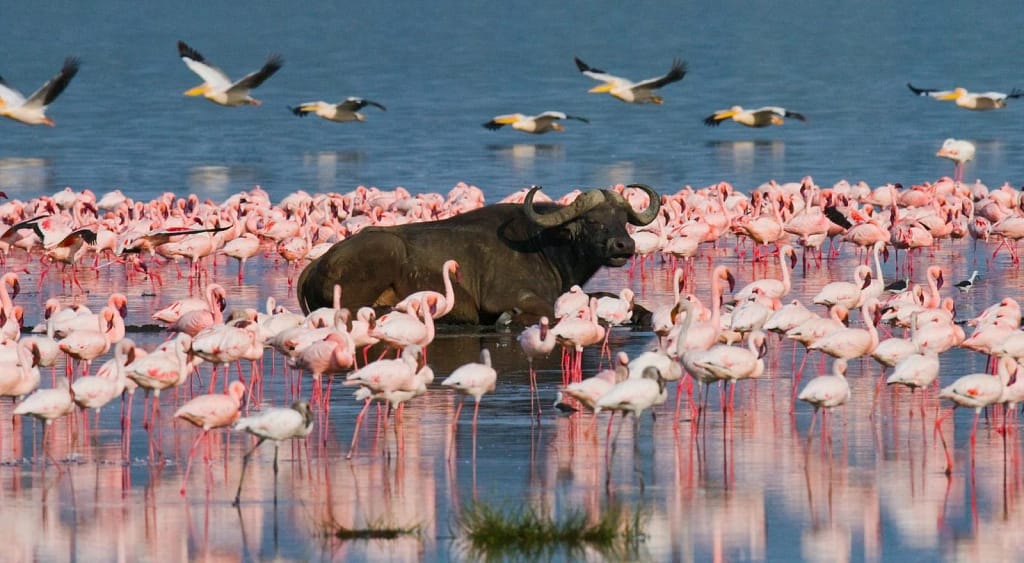Marking Biodiversity Day: Guterres Urges Nations to Reassess Relationship with Nature
Concerned about the declining number of flamingoes, a data collection exercise has been carried out at Nakuru and Elementaita lakes to identify the factors contributing to the decline in the populations of these iconic birds.
The exercise was undertaken by the County Government of Nakuru County in partnership with the United Nations Educational, Scientific and Cultural Organization (UNESCO) and the Kenya Wildlife Service (KWS).
The initiative involved identifying the challenges contributing to the decline of flamingo populations, investigating the extent of environmental degradation, and assessing ongoing efforts to maintain and restore the ecosystems of these vital lakes.

There are concerns that rising water levels in Rift Valley lakes, climate change, and habitat degradation are pushing flamingo populations toward the brink of extinction. According to a Senior Researcher at the Kenya Wildlife Service (KWS), Joseph Edebe, increased volumes of water at Lake Nakuru and Bogoria have destroyed large portions of the birds’ habitats, leading to a decline in their numbers.
The researcher explained that the increase in water levels had reduced the alkalinity of the lakes and, as a result, weakened their capacity to sustain blue-green algae that flamingos feed on. He further noted that unpredictable weather patterns have disrupted the migration of flamingos from Tanzania to Kenya, adding that curbing lake pollution and increasing public education were vital to strengthening protection of the migratory birds.
Nakuru County Secretary, Dr Samuel Mwaura says the study focused on the impact of factors like food availability, lake chemistry, climate change effects on flamingo populations, and also the impact of rapid urbanization on the survival of flamingos. He said the county government is now focused on public awareness campaigns, evidence-based research, and pollution mitigation in large water bodies within the devolved unit as part of efforts to boost conservation of flamingos.
In the months of January and July every year, KWS, the National Museums of Kenya, Kenya Wildlife Nature Kenya, Site Support Groups and volunteers partner in carrying out a census of water birds.
Between 2008 and 2015, statistics from the census, particularly in Lakes Nakuru and Bogoria, confirmed a declining trend in lesser flamingos, while the population of greater flamingos remained stable.

Lesser flamingos are the most numerous of the six species of flamingo found across the world, and more than three-quarters are found in the soda lakes of Kenya, Tanzania, and Ethiopia. Despite their numbers, with estimates ranging between 2 million and 3 million birds, the species is in decline and officially classified as “near threatened”.
Rising water levels at many of the feeding lakes have been found to be decimating the cyanobacteria that the birds have evolved to eat. In research published in the journal Current Biology, researchers found that only half of the lakes that provided high-quality feeding habitat in 2000 were still suitable feeding lakes in 2022.
“These lakes are especially sensitive to change because they often have no outflowing rivers. And as their waters rise, they are diluted, reducing their salinity and alkalinity and limiting the growth of the cyanobacteria the flamingos depend on,” the study concluded.
Water levels have risen the most in recent years in Kenya and Tanzania, particularly at historically important flamingo lakes Bogoria and Nakuru, which supported more than 1 million birds in the recent past. As Lake Nakuru almost doubled in size between 2009 and 2022, while its mean concentration of chlorophyll halved, the number of birds noticeably declined in response to the losses in their food source.
In Lake Natron in Tanzania, the only regular breeding site for lesser flamingos in East Africa, the rising water levels and declining food sources at Natron threaten not only current populations but the birds’ ability to breed in the region, possibly leading to drastic declines in the future.
Rising water levels are likely caused by a combination of increased rainfall in recent decades and deforestation, which causes the rainfall to run off directly into the lakes. Rainfall is predicted to increase in East Africa with climate change, driving further lake level rises in the future.




